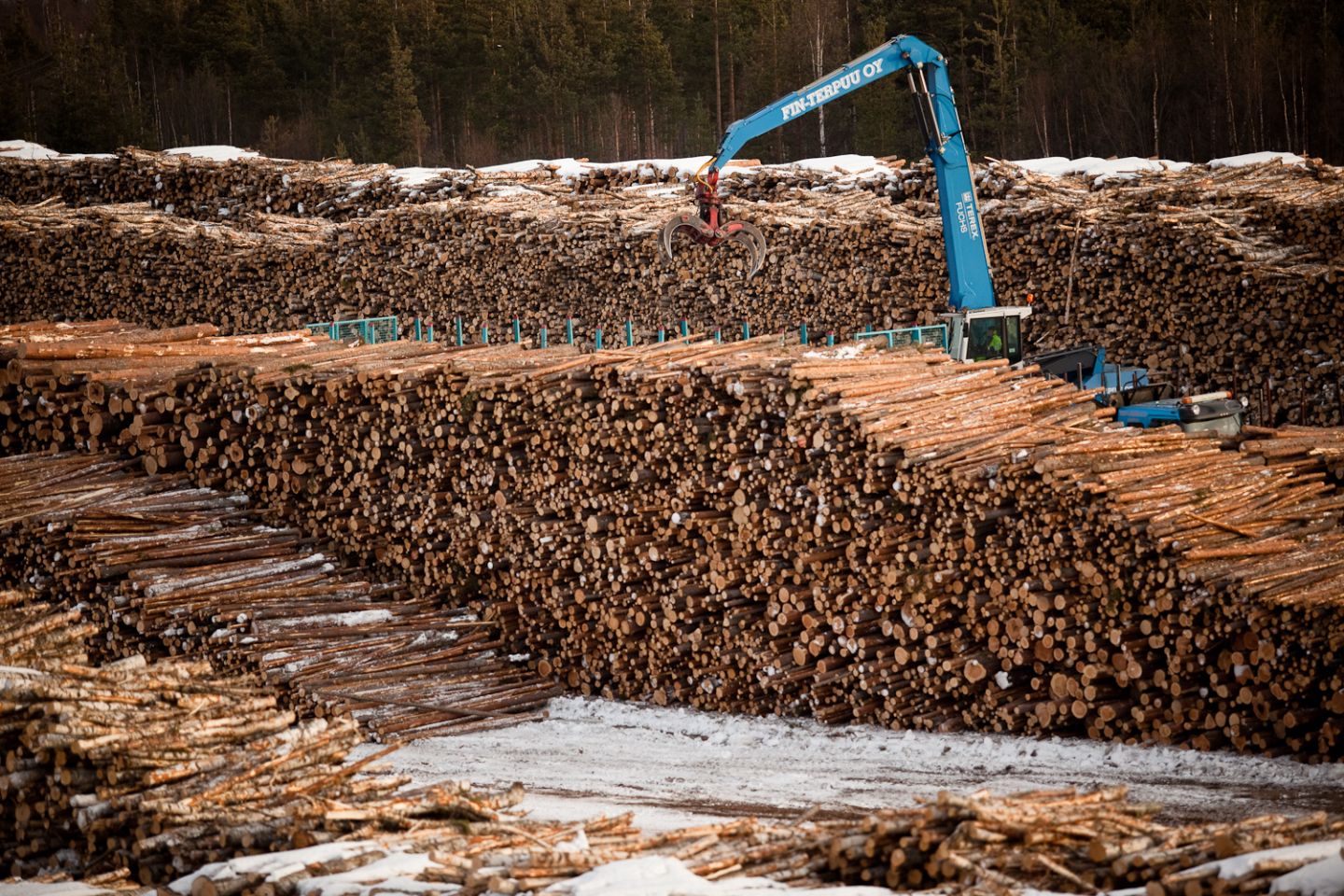Forests are a major source of income and employment in Lapland. The large-scale investments in bioindustry will increase the current volume and offer many new business opportunities.
Facts
- Forest sector’s economic output €1.4 billion, largely from the pulp and paper industry
- Employment yield about 3,400 person years
- 5 million hectares of forest, of which two-thirds can be used for timber production
- The timber resources of the forests have increased 1.5-fold since the 1970s
- Metsä Fibre bioproduct mill 1,6 billion euro investment in Kemi
- Biorefinery in planning also in Kemijärvi
According to the Finnish Forest Centre, the annual economic output of the forest sector in Lapland is about €1.4 billion. The majority of this, roughly €900 million, comes from the pulp and paper industry. The annual yield of forestry is about €300 million, while the wood product industry generates some €210 million in annual returns. The forest sector employed almost 3,400 people in 2018, with forestry as the leading employers. (Finnish Forest Centre. 2020)
Vast and growing forest resources in Lapland
Of the entire land area of Lapland, 98% (i.e. 9 million hectares) is viable forest industry land. The actual forest area in Lapland spans 5 million hectares, two-thirds of which can be used for timber production.
The realisation of the extensive investment plans in the forest and bioindustries would increase the use of wood in Lapland. Concern for the sustainability of timber resources and the importance of forests as a carbon sink has been brought up in conjunction with the planning of the projects. Forests act as carbon sinks, which means that they extract carbon from the atmosphere when the quantity of growing timber exceeds logging volumes. Areas where timber is not harvested serve as carbon stores.
According to Natural Resources Institute Finland, a sustainable level for the accumulated harvesting of stemwood in the whole of Finland is more than 85 million cubic metres per year. In 2020 the actual accumulated harvesting volume in the country was 65 million cubic metres. Thus, the forest resources are growing strongly.
According to statistics, the accumulated round wood removal volume in Lapland was about 5 million cubic metres (2019), while the possible level for the accumulated harvesting is estimated as around 7 million cubic metres. Currently, in Lapland, the growth of stemwood is well above the total depletion which includes the harvesting.
The Finnish Forest Centre’s numbers indicate that, by the 2010s, the timber resources of Lapland’s forests had increased 1.5-fold from the 1970s. According to Natural Resource Institute’s statistics, the volume of forest resources in Lapland has clearly increased also during the measurement period 2014–2019.
Going forward, the northern forest boundary in the region may climb higher in northern Lapland. Climate change is predicted to continue increasing the amount of timber resources, especially in Northern Finland. Currently, forest growth is far ahead of logging rates.

The future is looking bright for the forest sector and the bioeconomy
The outlook for the bioproduct industry is good and significant investments are being planned for Lapland. Current technology is transforming pulp mills into bioproduct mills that can manufacture plenty of other products besides pulp. In addition to this, the mills can generate renewable energy through their processes for themselves and other operators.
Metsä Fibre is building a new bioproduct mill in Kemi, the investment decision was made early 2021. The new mill will be the largest wood processing plant in the northern hemisphere and the investment is estimated at 1.6 billion. The new mill is scheduled to start operation in the third quarter of 2023. The mill will produce softwood and birch pulp as well as other bioproducts and replace the company’s old pulp mill in the city. Earlier, there has also been plans for a second generation biorefinery in Kemi by Kaidi Finland, but the project is on hold.
A biorefinery is also planned for Kemijärvi in Eastern Lapland. The project has been taken over by Vataset Teollisuus Oy in 2021 and the goal is to start construction as soon as possible.
The coming investments will have strong positive employment impacts both directly and through the subcontractor network. In fact, a significant cluster is forming around bioindustry in Lapland, which provides a wide range of subcontracting opportunities and generates new business activity. Several companies will be able to process the side-streams to develop new products in the industrial ecosystem.
The Finnish Forest Centre’s regional plan involves promoting the growth of the forest industry and economy. The objectives of the current development plan pertain to developing the roads needed for timber management in Lapland and bolstering the circular economy through the commercialisation of side streams, for example.
A regional challenge related to forestry in Lapland is that the sector in the region is predominantly state-owned, with many privately-owned forests being rather small in size. In addition to this, almost one-third of the forest area in Lapland is protected, which limits the region’s opportunities in terms of the forest industry. However, the protection arrangements will secure the survival of Lapland’s unique nature and diverse sectoral structure.
One of the strategic goals of the Ministry of Agriculture and Forestry’s National Forest Strategy 2025 is to ensure that Finland in its entirety is a competitive operating environment for various forest-based business operations. The development of the bioeconomy is also among the key projects of the Finnish Goverment. As such, Finland has set its sights on becoming the EU leader in bioeconomy by 2030. Lapland’s bioeconomy program, in turn, aims for making the region the leading part of the country in terms of bioeconomy.



